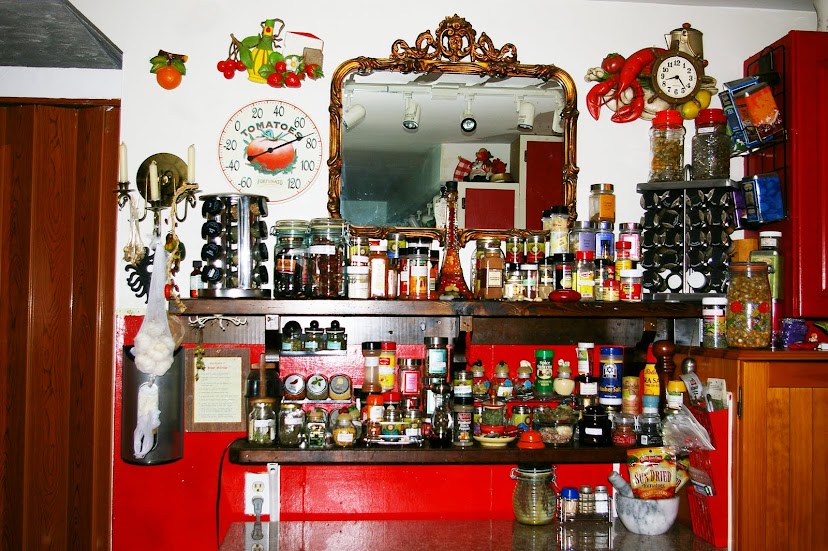For more than thirty years, nonfat dry milk was a frugal staple. For things like baking and making yogurt, it was as good as fresh milk. Not many people wanted to drink the stuff, but a whole generation of frugal folks knew you could use it as an extender--make up a quart of nonfat dry milk and mix it with a gallon of fresh milk. Since late summer last year, though, nonfat dry milk has been priced more like a gourmet specialty item than as the frugal alternative it used to be.
To put it in context, food prices overall are up 4.5%, dairy and "related products" are up 13.1%, but nonfat dry milk is up 104%! At that price, it's literally as cheap to use fresh milk as it is to use dry.
What happened? The market for nonfat dry milk is a global one. Just lately we've had one of those perfect storms of supply and demand changes that commodities markets see from time to time.
The major exporters of nonfat dry milk are the United States, the European Union, and Australia. Here are some of the recent shifts that have impacted the price of nonfat dry milk:
Having given all that attention to the market, I also like to mention an important non-market force: government dairy subsidies. The change in the EU subsidy for nonfat dry milk is just one example. All these programs have complex effects on prices for dairy products. For example, in the US there's a support price of $0.80 per pound for nonfat dry milk. At current prices, that's not going to affect supplies, but in any market that has the kind of pervasive price support structures that the dairy market has, one has to be careful when analyzing sources of price shifts.
With US production returning to normal, I think we'll see nonfat dry milk prices begin to moderate, but as long as the US dollar remains weak and the drought in Australia continues, export demand will keep the price higher than its historical average.
Disclaimer - The herbal information on this web site is intended for educational purposes only. It is not the intention of the editor to advise on health care. Please see a medical professional about any health concerns you have. Disclaimer - These statements have not been evaluated by the FDA. The information on this web site is not intended to prevent, diagnose, treat, or cure any disease.
To put it in context, food prices overall are up 4.5%, dairy and "related products" are up 13.1%, but nonfat dry milk is up 104%! At that price, it's literally as cheap to use fresh milk as it is to use dry.
What happened? The market for nonfat dry milk is a global one. Just lately we've had one of those perfect storms of supply and demand changes that commodities markets see from time to time.
The major exporters of nonfat dry milk are the United States, the European Union, and Australia. Here are some of the recent shifts that have impacted the price of nonfat dry milk:
- For the past five years, Australia has suffered a severe drought. It has cut Australian milk production by 20%; this year's production is down by a billion liters.
- Over the past two years, the EU has been cutting farm subsidies in a way that encourages the production of cheese over nonfat dry milk, and has also ended all dairy export subsidies.
- A July heat wave in California killed large amounts of dairy cattle--and California produces over half of the US's nonfat dry milk. Milk production in the US has only in the past couple of months climbed back to year-ago levels.
- The weak US dollar has made US nonfat dry milk cheaper overseas, leading to higher US exports.
- There's been strong US demand for milk proteins and strong world-wide demand for cheese. Meeting this demand has consumed milk that might otherwise have gone to making nonfat dry milk powder.
Having given all that attention to the market, I also like to mention an important non-market force: government dairy subsidies. The change in the EU subsidy for nonfat dry milk is just one example. All these programs have complex effects on prices for dairy products. For example, in the US there's a support price of $0.80 per pound for nonfat dry milk. At current prices, that's not going to affect supplies, but in any market that has the kind of pervasive price support structures that the dairy market has, one has to be careful when analyzing sources of price shifts.
With US production returning to normal, I think we'll see nonfat dry milk prices begin to moderate, but as long as the US dollar remains weak and the drought in Australia continues, export demand will keep the price higher than its historical average.
God Bless!
Simone :)
Copyright@SimoneBonda Disclaimer - The herbal information on this web site is intended for educational purposes only. It is not the intention of the editor to advise on health care. Please see a medical professional about any health concerns you have. Disclaimer - These statements have not been evaluated by the FDA. The information on this web site is not intended to prevent, diagnose, treat, or cure any disease.

No comments:
Post a Comment